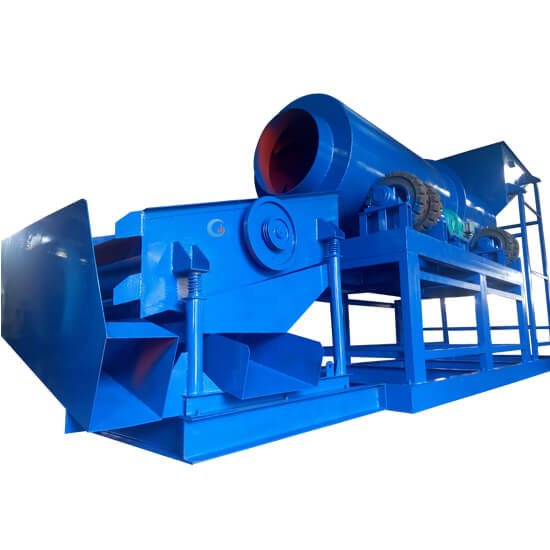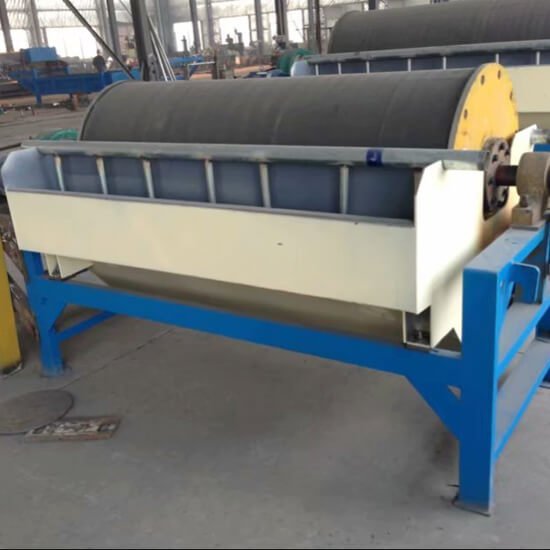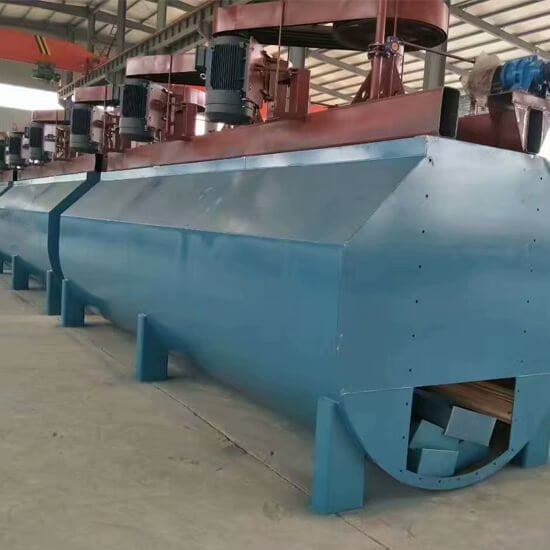Physical properties of quartz sand
Quartz sand is quartz particles made by crushing and processing quartz stone. Quartz is a non-metallic mineral, a hard, wear-resistant and chemically stable silicate mineral. Its main mineral component is SiO2, with a melting point of 1713°C. The luster is glass-like, and the fracture is shell-like or staggered. The crystals are hexagonal columns with horizontal stripes and sometimes fat-like. Pure texture is colorless.
The use of quartz sand
Quartz sand is an important industrial mineral raw material, non-chemical dangerous goods. Industrial production is generally 50KG or 25KG packaging and export ton bag packaging. Common specifications: 0.5-1.0mm 0.6-1.2mm 1-2mm 2-4mm 4-8mm 8-16mm 16-32mm. (mm is millimeter unit)
Common application areas of quartz sand:
(1) Coating of quartz sand: filler;
(2) Quartz sand construction: concrete, cementitious materials, road construction materials, artificial marble, cement physical property testing materials, etc.;
(3) Rubber and plastic of quartz sand: filler;
(4) Ceramics and refractory materials of quartz sand: raw materials such as blanks and glazes for porcelain, high-silica bricks for kilns, ordinary silica bricks and silicon carbide;
(5) Metallurgy of quartz sand: raw materials or additives and fluxes of silicon metal, ferrosilicon alloy and silicon aluminum alloy;
(6) Electronics of quartz sand: high-purity metal silicon, optical fiber for communication, etc.;
(7) Chemical industry of quartz sand: raw materials such as silicon compound and water glass, filling of sulfuric acid tower, amorphous silica fine powder;
(8) Quartz sand machinery: the main raw materials and abrasive materials of foundry sand;
(9) Glass of quartz sand: main raw materials for flat glass, float glass, glass products, optical glass, glass fiber, glass instruments, conductive glass, glass cloth and special anti-ray glass;
(10) Aviation and aerospace of quartz sand.
Why is quartz purification required?
Anyone who knows quartz sand knows that quartz sand has a wide range of uses and is a non-metallic mineral raw material. It is difficult to purify quartz sand. Quartz sand mainly contains some other impurity minerals, among which iron-containing impurity minerals are: goethite, hematite, limonite, ilmenite, pyrrhotite, tourmaline, Amphibole, Biotite, etc. The existence of these impurities greatly reduces the use value of quartz sand, so it is very important to remove iron from quartz sand.
In recent years, the research of quartz sand purification and deep processing technology mainly focuses on beneficiation and purification (physical method, chemical method, biological method and combined purification method), silicon powder processing (ultrafine grinding, spheroidization) and surface modification.
Quartz sand iron removal method
High-quality raw ore is the key factor for high-quality quartz sand, but quartz sand has some impurities more or less, and quartz sand beneficiation and purification are mostly for iron removal. The following three categories:
The first category: physical-mechanical methods, such as magnetic separation, gravity separation, flotation, ultrasonic beneficiation and water washing, etc., these methods are suitable for processing coarse impurities;
The second category: chemical method, which is leaching with inorganic acid to remove iron oxide film on fine-grained iron-titanium minerals or quartz particles through chemical reaction. Although this method is more efficient, its cost is also high, the technical conditions are harsh, and it is harmful to the environment;
The third category: microbial beneficiation method, which uses various bacteria to separate iron in oxidized ore, the process is slow, and the current industrialization still has certain difficulties.
1. Physical purification
The physical method is mainly to remove impurities in quartz sand by washing-grading desliming, scrubbing, magnetic separation and flotation, and it can also be combined with several processes to further remove impurities.
(1) Water washing – graded desliming and scrubbing

Scope of application: It is suitable for simple water washing to remove clay minerals. Generally, the particle size of quartz sand is 0.075-1.0mm, while the particle size of clay minerals is less than 50μm, generally less than 20μm.
Iron removal method:
The advanced coarse sieve removes the grit and removes the grit with an aperture of 5cm.
Use a 0.5-1.0mm wet sieve to remove coarse grit that hinders glass production. So that the quartz sand and clay minerals can be separated from each other in the aqueous medium.
Different equipment can be used for cleaning, such as cleaning tanks, cyclones, ascending water flow hydraulic classifiers, etc. The up-flow hydraulic classifier is now more commonly used, and the fine minerals are discharged from the top overflow in the form of slurry, while the coarser and heavier particles are discharged from the bottom.
In the quartz sand beneficiation process, the fine-grained fraction with a particle size of less than 0.1 mm is usually called slime. For quartz sand with a large amount of clay and slime, as the particle size becomes finer, the grade of silica gradually decreases, while impurities such as iron and aluminum increase. The water washing-grading desliming method can effectively improve its grade.
For the thin film iron and adhesive impurities on the surface of quartz sand, the effect of water washing-grading desliming is poor, which requires the use of mechanical force and the grinding and peeling force between the sand particles to remove the thin film iron and adhesive impurities that are suitable for the sand surface. After grading and desliming, a better impurity removal effect can be achieved.
Research shows that the effect of rod friction scrubbing is the most ideal. Generally, the scrubbing concentration is 50%-60%. The scrubbing time should be determined according to the properties of the ore to initially meet the product quality requirements. The time should not be too long to avoid excessive energy consumption and Excessive wear and tear on equipment.
In addition, by adding a wiping aid (such as water glass) during the scrubbing process, the surface energy of the mineral particles can be reduced, the electric repulsion between the particles can be improved, and the dispersion of fine particles and the splitting of the particles can be generated, thereby helping The effect of scrubbing.
(2) Ultrasonic iron removal method
The particle surface of natural quartz sand is easily polluted by the solution containing iron impurities, and an iron film is formed on the surface, resulting in the problem that the iron content of natural quartz sand is too high and difficult to remove. Under the action of ultrasonic waves, the iron film on the surface of the quartz particles will fall off, so as to achieve the purpose of removing impurities such as iron.
(3) Reselection, magnetic separation and flotation
re-election
Scope of application: When the iron in quartz sand is mainly in the form of heavy minerals (minerals with a relative density greater than 2.9), gravity separation should be considered.
The standard for re-selection is: E=(heavy mineral density-medium density)/(light mineral density-medium density). When E is greater than 2.5, it is easy to reselect and separate. When this value decreases, the reselection efficiency decreases. When the value is less than 1.25, it is not suitable for gravity beneficiation.
The role of re-selection: Re-selection can generally be used effectively for the entire particle size range of quartz sand. However, flotation is generally ineffective for the upper end of the particle size range. In contrast, gravity separation becomes difficult for mixed particles, flake particles, light mineral particles and medium density minerals.
magnetic separation

Scope of application: The strong magnetic field concentrator is mainly suitable for quartz sand beneficiation. The investment in magnetic separation is relatively high, but the operation is simple and the production cost is low.
Advantages of magnetic separation: It has high selectivity and can obtain high yield of quartz sand while effectively removing impurity minerals. The content of strong magnetic minerals (such as magnetite) in quartz sand is very small. Few placers can reduce iron content with a low-field magnetic separator.
flotation

To remove iron-bearing heavy minerals, flotation is relatively straightforward. A common collector for iron oxide is sodium petroleum sulfonate. Petroleum sulfonates can also be replaced by fatty acids.
For some iron impurities hosted in iron mineral particles or in mineral particles such as biotite, garnet and amphibole, and aluminum impurities hosted in feldspar, the most effective removal method is flotation. . At present, flotation mainly adopts acidic conditions, and can be divided into fluorine flotation and fluorine-free flotation according to the different reagents used.
However, from the perspective of industrial production, fluorine flotation is still the most important flotation method. Its advantages are that the purification effect is better and the technology is mature, but it has a large corrosive effect on equipment and serious environmental pollution.
Advantages of flotation: The removal of iron from minerals by flotation can achieve better results than other methods. Because it not only removes iron minerals, but also removes temporal particles with iron films and clay minerals. Therefore, many quartz sand concentrators in developed countries use the flotation method.
Disadvantages of flotation: In order to remove iron impurities, it is necessary to further reduce the particle size of quartz sand to the state of monomer dissociation. Therefore, flotation is less adaptable to coarse particles, while the particle size range of quartz sand is relatively coarse. In addition, special consideration should be given to the pollution of the surrounding environment by the flotation reagents.
2. Chemical purification
The main chemical method for purifying quartz sand is acid leaching, which is also the most commonly used because of its high leaching efficiency. Compared with the physical method, the chemical method is more expensive, but the purification effect is better, especially when the purity of the quartz sand is high, the chemical purification is more effective.
Acids commonly used in acid leaching include sulfuric acid, hydrochloric acid, nitric acid, hydrofluoric acid, and oxalic acid. Dilute acid has good removal effect on impurities such as iron, aluminum and magnesium, while concentrated sulfuric acid and hydrofluoric acid have good removal effect on titanium and chromium impurities. Therefore, in actual beneficiation, mixed acid has the best purification effect on quartz sand.
Oxalic acid is a weak acid, with little environmental pollution, less corrosive effect on equipment, and obvious iron removal effect. The reaction mechanism is that oxalic acid reacts with impurities such as iron on the surface of the quartz sand particles to form several complexes, which are separated from the surface of the particles to achieve the purpose of separation and purification.
In addition, the inclusion impurities in the quartz are usually removed by high-temperature chlorination calcination. For impurities such as alkaline earth metals and transition metals, the purity of quartz sand after high temperature chlorination can reach more than 99.99%.
3. Microbial purification
Microbial leaching is a new purification method that uses the physiological functions of microorganisms and their metabolites to separate the impurities on the surface of quartz sand from the quartz matrix through oxidation, dissolution and decomposition.
Through many studies, it has been found that the use of Aspergillus niger, Mycobacterium phlei, Penicillium, Polymyxin and other microorganisms to extract quartz sand has a good purification effect. Aspergillus niger strains can remove iron from quartz sand, but the treatment time is longer.
Various physico-mechanical and chemical methods can be used alone or in combination to remove iron from quartz sand, and their efficiency depends to a large extent on the nature of the mineral raw material.
Although microbial leaching has the advantages of being more environmentally friendly and energy-saving in removing impurities, its shortcomings such as long leaching time and low leaching efficiency restrict its industrial application.
4. Joint purification
Due to the different properties of quartz ore in different regions, the impurities and the particle size of the embedded parts are also different. Therefore, when the pretreated quartz sand is further purified and prepared, different combined processes need to be adopted according to the ore properties of the quartz sand itself. Only through the process, can we remove impurities in a targeted manner and obtain high-purity quartz sand.
5. Surface modification
Natural quartz powder has poor affinity with polymer materials. When used as a filler, it tends to disperse unevenly or even form agglomerates, which has a great impact on the quality of the product. Therefore, it is necessary to modify the surface of quartz powder to make it reactive.
Commonly used modifiers for chemical modification of quartz sand surfaces include silane coupling agents (amino, epoxy, methacryl, trimethyl, methyl and vinyl), aluminate coupling agents, titanate coupling agents Coupling agent, stearic acid compounding agent, etc., among which silane coupling agent is mainly used.
Principle to follow when choose quartz sand beneficiation and purification process
In fact, the purification technology of quartz sand is becoming more and more advanced. In practical applications, it is rare that only one method can be used to produce qualified sand. Generally, a combination of methods is required. For a certain kind of quartz sand, the following factors should be considered in the determination of the beneficiation process:
- The original composition of the quartz sand to be treated and the occurrence state of iron;
- The quality requirements of the sales end user for the quartz sand concentrate;
- Concentrator investment and production cost limits;
- Pollution of the surrounding environment.
The above is a detailed introduction to the “6 methods for iron removal from quartz sand and the selection principle of purification process”. High-purity quartz sand has always been what we need, and only relying on imported quartz sand will have limitations. Therefore, domestic The improvement of quartz sand purification also makes the era of quartz sand coming.
Contact Us
JXSC Mining Machinery taking the advantage of mineral processing technology, processing plant design, and research and development of new mineral processing technology, we have formed a comprehensive service system of processing plant equipment, civil engineering equipment installation, production commissioning, and technical management contracting; it advocates mineral processing, environmental protection chemicals, and mineral processing automation. Modern green mining technology Spreaders and practitioners.